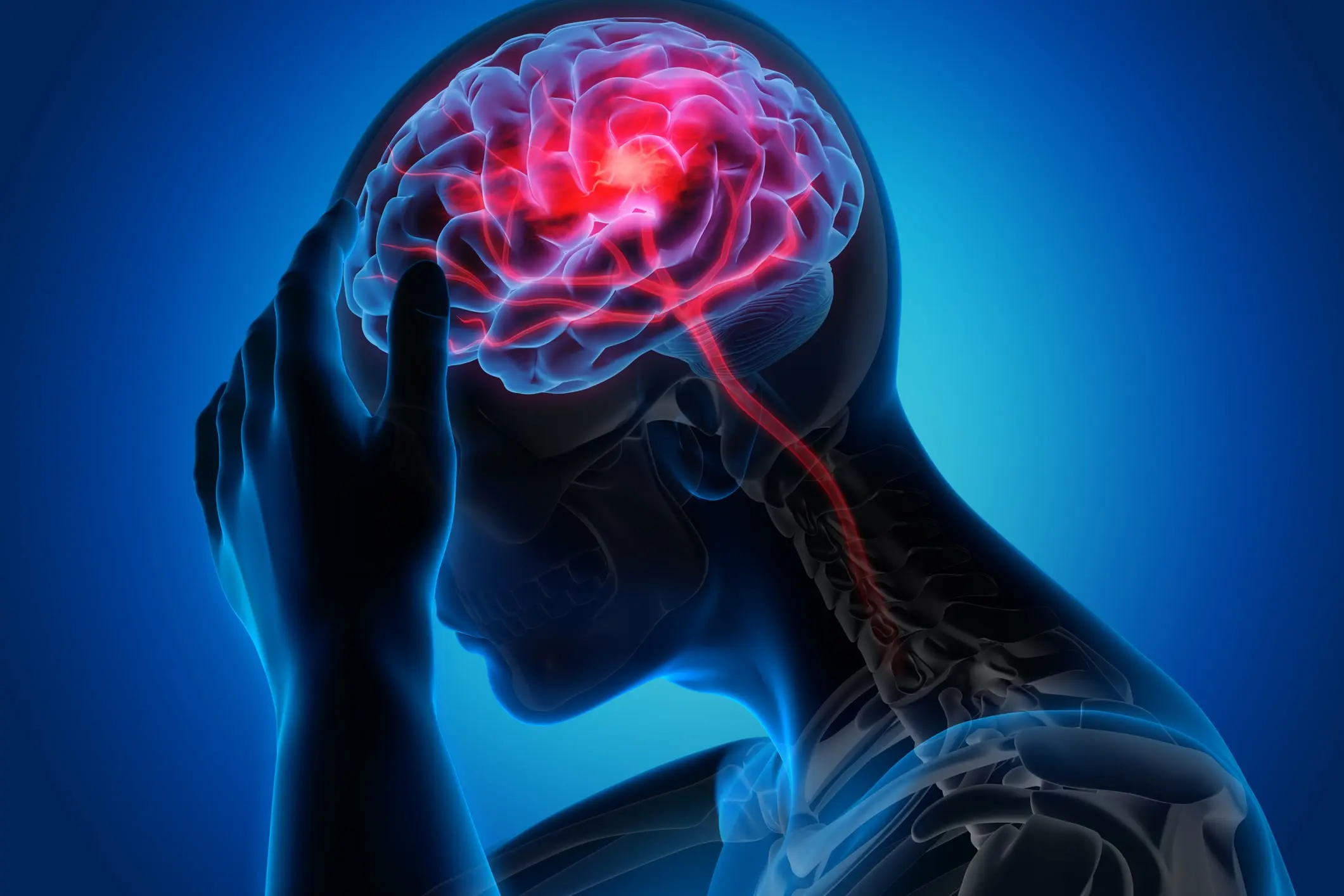As the days get longer, the sun gets stronger, and the temperature rises, we can’t help but feel the excitement of summer.
But for those struggling with addiction, summertime can present real hazards.
With barbecues, beach parties, and overall good vibes, it’s easy to let your guard down and slip back into old habits.
So why do relapse rates spike in the summer?
Let’s take a closer look at the connection between sunshine and slips.
Understanding Relapse
Addiction is a complex, chronic disorder often characterized by compulsive substance use despite harmful consequences.
It significantly alters the brain’s structure and function, making the journey to recovery challenging but not impossible.
Relapse is a key part of the recovery conversation.
In the context of substance addiction, it refers to the resumption of the addictive behavior after a period of improvement or abstinence.
Rather than a singular event, relapse is often viewed as a process, with emotional, mental, and physical stages.
It’s crucial to note that relapse does not equate to failure; instead, it’s an integral part of many people’s recovery journey.
Relapse indicates that the current treatment or coping strategies may not be entirely effective for the individual, suggesting the need for adjustments or alternative methods.
It’s a signal to re-evaluate and reinforce one’s recovery plan, making it a potentially powerful tool for learning and growth within the broader context of healing from addiction.
During the recovery process, individuals must constantly navigate potential triggers, and certain times of the year, like summer, can heighten these risks.
RELAPSE RATES ACROSS DIFFERENT ADDICTIONS
Relapse rates can vary significantly depending on the type of substance addiction.
Alcohol and opioid addictions often have high relapse rates, with studies indicating that over half of those in recovery may experience relapse.
For example, research suggests that approximately 40% to 60% of people treated for alcohol addiction relapse within a year.
For opioid addiction, this rate can be even higher, sometimes reaching up to 90%1.
Stimulant addictions, such as cocaine or methamphetamine, also exhibit high relapse rates.
Nicotine addiction has one of the highest relapse rates, with some studies suggesting as many as 80%-90% of smokers relapse.
In contrast, addictions to substances like marijuana tend to have lower relapse rates.
It’s essential to understand that these rates don’t reflect treatment effectiveness but rather addiction’s chronic nature.
Each person’s journey is unique, and relapse is often a part of the road to long-term recovery.
| Addiction Type | Relapse Rate | Details |
|---|---|---|
| Alcohol | 40% – 60% | Relapse usually occurs within the first year of treatment |
| Opioid | Up to 90% | Relapse can occur frequently due to the high dependency nature of the substance |
| Stimulants (Cocaine, Methamphetamine) | High | Relapse rates are typically high due to the intense withdrawal symptoms |
| Nicotine | 80% – 90% | One of the highest relapse rates due to the widespread availability and social acceptance of smoking |
| Marijuana | Lower | While lower than other substances, relapse still occurs due to various factors including the ease of access |
Factors Contributing to Summertime Relapse
INCREASED SOCIAL ACTIVITIES AND GATHERINGS
An uptick in social activities and gatherings, including barbecues, beach parties, festivals, weddings, and family vacations, often marks summer.
These events are typically associated with joy and relaxation, but for individuals recovering from substance addiction, they can present a myriad of challenges.
The availability and often normalized use of substances at these gatherings can intensify cravings and pressure to partake.
The fear of standing out or explaining their sobriety to others can also increase emotional stress, potentially leading to relapse as a form of escape or fitting in.
Furthermore, these occasions can bring about encounters with people or environments associated with past substance use, triggering memories that could heighten the risk of relapse.
Consequently, while these social events are meant for enjoyment, they can unintentionally become stumbling blocks on the path to recovery.
VACATION MINDSET AND ALTERED ROUTINES
Summertime often ushers in a sense of freedom and escape from the usual responsibilities, encapsulated in what many refer to as the “vacation mindset.”
This mindset can be a double-edged sword for those recovering from addiction.
On the one hand, it’s a much-needed break from stressors that might trigger substance use.
On the other, the relaxation of rules and structures can lead to a loosening of the routines that support recovery, such as regular meetings, therapy sessions, or consistent sleep and meal times.
This departure from routine might also involve travel, which can separate individuals from their support systems and place them in unfamiliar environments where old habits can creep in unnoticed.
This shift in mindset and routine, coupled with the ‘out-of-sight, out-of-mind’ attitude that can come with being on vacation, can make individuals more vulnerable to relapse during the summer months.
EMOTIONAL TRIGGERS AND SEASON AFFECTIVE DISORDER (SAD)
Emotional triggers, which are often heightened during the summer months, play a significant role in relapse.
For many, summer brings back memories of past substance use, which can serve as powerful triggers for relapse.
Additionally, for some people, the summertime can exacerbate feelings of loneliness or isolation, especially when it seems everyone else is carefreely enjoying the season.
Interestingly, while Seasonal Affective Disorder (SAD) is typically associated with the colder, darker months of the year, a smaller portion of people experience what’s known as “summer SAD.2”
Instead of winter’s depressive episodes, these individuals face increased anxiety, insomnia, restlessness, and agitation during summer.
The heat, longer days, and disrupted routines characteristic of the season can significantly affect mood and stability, possibly leading to a relapse.
Recognizing and effectively managing these emotional triggers are critical aspects of maintaining sobriety, particularly during the challenging summer months.
| Factor | Description |
|---|---|
| Increased Social Activities and Gatherings | Summertime events often involve alcohol and substances, presenting numerous triggers. Fear of standing out or explaining sobriety can increase stress, leading to relapse. |
| Vacation Mindset and Altered Routines | The “vacation mindset” can disrupt routines that support recovery, such as regular meetings or therapy sessions. Travel can separate individuals from their support systems and familiar environments. |
| Emotional Triggers | Summer often brings back memories of past substance use, serving as powerful triggers. The season can also exacerbate feelings of loneliness or isolation for some people. |
| Seasonal Affective Disorder (SAD) | “Summer SAD” can lead to increased anxiety, insomnia, restlessness, and agitation during the summer months. These conditions can significantly affect mood and stability, possibly leading to a relapse. |
Strategies to Prevent Summer Relapses
IMPORTANCE OF AWARENESS AND PLANNING
Awareness and planning are pivotal elements in managing the risk of summertime relapse.
Recognizing high-risk situations allows individuals to avoid them, when possible proactively, or to prepare strategies to cope when avoidance isn’t an option.
This might mean planning alternative non-alcoholic beverages for social gatherings, arranging check-ins with a support person during vacations, or scheduling therapy appointments around a disruptive summer schedule.
It could also involve having a prepared response to decline substances or identifying safe spaces to retreat to when faced with triggers.
Additionally, staying aware of emotional health, and seeking help when feelings of loneliness, anxiety, or memories of past substance use intensify, is crucial.
Proactive planning and awareness aren’t just about preventing relapse – they’re about fostering resilience and empowering individuals to navigate their recovery journey, no matter the season.
THE ROLE OF A STRONG SUPPORT SYSTEM
A strong support system is invaluable in preventing relapses, particularly during challenging periods such as the summer months.
Friends and family can offer emotional support, provide a listening ear, and engage in substance-free activities, helping to reduce feelings of isolation or boredom.
They can also act as a vital reality check, helping individuals recognize when they might be approaching high-risk situations or when emotional triggers are escalating.
In addition to personal connections, support groups, whether online or in-person, offer a community of individuals who truly understand the struggle of addiction and recovery.
These groups can provide a safe space to share experiences, learn coping strategies, and gain reassurance and encouragement.
Professional help, including therapists or counselors specializing in addiction, can offer crucial guidance and resources.
By cultivating a strong, understanding support network, individuals in recovery can bolster their resilience against relapse, not just in summer, but throughout their recovery journey3.
MAINTAINING ROUTINE
Maintaining a routine is a powerful tool in the recovery journey, providing stability, predictability, and a sense of control.
Regular therapy sessions, support group meetings, exercise, meditation, or other self-care practices can anchor individuals, offering a sense of normalcy and consistency amid the flux of summer disruptions.
While it’s natural to enjoy the flexibility that summer offers, it’s vital to balance this with the structure supporting recovery.
This doesn’t mean sticking rigidly to a routine at the expense of enjoying the season.
Instead, it’s about integrating recovery practices into the summer schedule—perhaps by moving a meeting to an earlier time to accommodate a family outing or bringing mindfulness practices to a beach vacation.
By maintaining recovery routines in the face of summer changes, individuals can navigate the season’s challenges without compromising their journey toward lasting sobriety.
PRIORITIZING SELF-CARE AND MENTAL WELL-BEING
In the face of potential summer relapse, prioritizing self-care and mental well-being becomes more important than ever.
Self-care goes beyond merely engaging in enjoyable activities; it encompasses practices that nourish both the body and the mind.
This could mean ensuring a healthy diet, maintaining a regular sleep schedule, engaging in physical activity, or taking time for relaxation and leisure.
Equally important is caring for one’s mental well-being.
This can involve meditation, journaling, therapy, or setting aside quiet moments for introspection.
Additionally, setting boundaries—avoiding certain gatherings, declining substance offers, or simply allowing oneself to take a break—is a crucial aspect of self-care.
Prioritizing self-care supports resilience and equips individuals with the emotional and physical strength needed to navigate potential triggers and high-risk situations, bolstering their ability to maintain sobriety throughout the summer and beyond.
HEALTHY COPING MECHANISMS
| Coping Mechanism | Description |
|---|---|
| Physical Activity | Exercise is a powerful tool for managing cravings. It boosts mood, reduces stress, and can provide a sense of accomplishment. It can also help structure your day. Options range from walking and cycling to swimming and team sports. |
| Meditation | Meditation can help manage cravings by promoting relaxation and mental clarity. Regular practice can enhance self-awareness, making it easier to identify triggers and choose how to respond to them. |
| New Hobbies | Picking up a new hobby can provide a distraction from cravings, offer a sense of purpose, and open up opportunities for socializing outside of substance-using contexts. Options are wide-ranging, from painting and gardening to learning a musical instrument or a new language. |
| Healthy Eating | Proper nutrition can support physical health, mood stability, and overall wellbeing during recovery. It can also provide a new focus, as learning to cook or prepare healthy meals can be a satisfying and therapeutic hobby. |
The Role of Treatment Centers in Managing Summertime Relapses
FROM DETOX PROGRAMS TO THERAPY AND COUNSELING
Treatment centers play a vital role in the recovery journey, offering services tailored to the individual’s needs.
These typically start with detoxification programs, designed to manage the physical symptoms of withdrawal from substances safely.
But the support goes beyond physical health.
Most centers also provide different types of therapy and counseling, such as cognitive-behavioral therapy, motivational interviewing, and family therapy.
These treatments help individuals understand the root causes of their addiction, develop coping strategies, improve relationships, and build motivation for recovery.
Many treatment centers offer holistic services like stress management, nutritional counseling, and physical fitness programs to promote overall wellness.
Support groups, relapse prevention education, and aftercare planning are also typical offerings.
For individuals at risk of summer relapse, many centers provide tailored strategies to navigate the season’s challenges.
It’s important to remember that treatment centers aren’t just for the start of the recovery journey – they can provide crucial support at any stage, including times of vulnerability like the summer months.
SUCCESS RATES OF TREATMENT CENTERS
Treatment centers are instrumental in many people’s journeys to recovery, with numerous studies highlighting their effectiveness.
The exact success rates can vary depending on the specifics of the program and the individual’s circumstances.
Still, the key point is that people who complete treatment programs are generally more likely to maintain long-term sobriety than those who try to quit without professional help.
Treatment centers offer structured, evidence-based approaches to address the physical aspects of addiction, such as withdrawal symptoms, and psychological factors, including underlying mental health issues or harmful behavioral patterns.
By addressing these facets simultaneously, treatment centers enhance the likelihood of sustainable recovery.
Moreover, the supportive environment fosters community and understanding, hugely benefiting motivation and emotional well-being.
Lastly, treatment centers equip individuals with valuable skills and strategies for managing triggers, stress, and cravings, which is crucial for preventing relapse.
It’s important to remember that while treatment centers play a pivotal role, recovery is a long-term process that requires ongoing commitment.
The journey may look different for each individual.
Change The Narrative
In the luminous days of summer, as we savor the season’s joys and navigate its challenges, it’s important to remember that the journey to recovery isn’t a straight path, but a winding road filled with hills and valleys.
While the summer months may present additional obstacles for those grappling with addiction, with increased awareness, effective planning, and the proper support, it’s possible to turn the season of relapse into a season of resilience.
So let’s rewrite the summer narrative, not with the hues of relapse, but with the vibrant colors of recovery, resilience, and hope.
After all, the most beautiful summers illuminate our path to a brighter, sober tomorrow.
If you or someone you care about is facing addiction, please get in touch with us. We’re Cornerstone Healing Center, a drug rehab in Scottsdale, Arizona.
We offer a confidential and cost-free assessment to help you begin your journey towards recovery.
SOURCES
[1] A Comparative Study of Factors Associated with Relapse in Alcohol Dependence and Opioid Dependence
[2] The chronobiology and neurobiology of winter seasonal affective disorder
[3] Recovery and Recovery Support
Published: 7./10/2023








